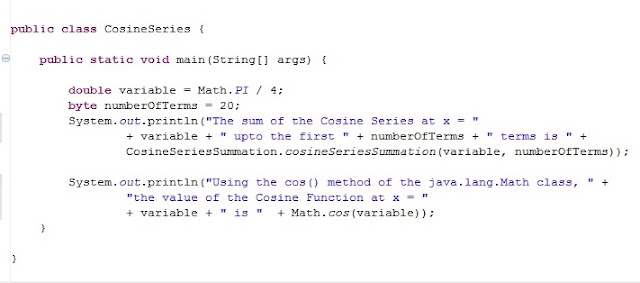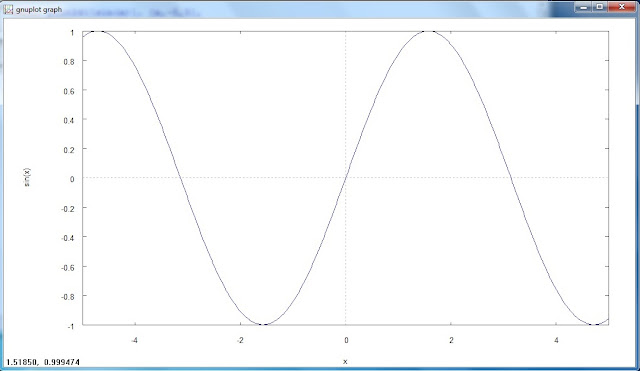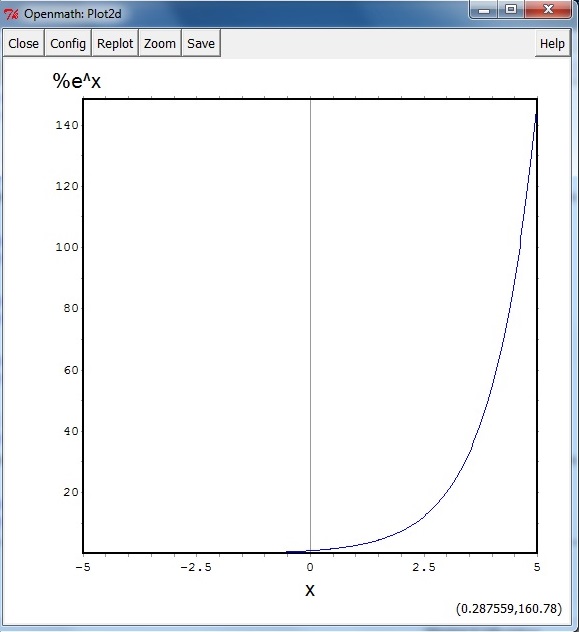Blaise Pascal (AD 1623 - 1662 )
In this program, we'll be generating the below number-triangle:
Known as Pascal's Triangle, it's a triangular array of Binomial Coefficients named after Blaise Pascal, a French mathematician, physicist, inventor, writer and Catholic philosopher (a Jansenist apologist, to be precise), which he described in his book Traité du triangle arithmétique of 1653.
File: PascalTriangle.java
We first write a class called BinomialCoefficient for computing the Binomial Coefficient (inclusive of the Factorial class) as:
class Factorial {
static long factorial (byte i)
{
if(i == 0 || i == 1)
return (long) 1;
else
return (long) i * factorial((byte) (i - 1));
}
}
class BinomialCoefficient {
static long binomialCoefficient(byte n, byte r){
long binCoeff = 0;
binCoeff = (long) (Factorial.factorial(n))/
(Factorial.factorial(r) * Factorial.factorial((byte) (n - r)));
return (long) binCoeff;
}
}
Next we invoke it in the PascalTriangle class below it as:
byte numberOfRows = 15;
Here, I've displayed the triangle upto 15 rows. If you want more number of rows, just assign it to the numberOfRows variable. The output is as:
Pascal's Triangle
Known as Pascal's Triangle, it's a triangular array of Binomial Coefficients named after Blaise Pascal, a French mathematician, physicist, inventor, writer and Catholic philosopher (a Jansenist apologist, to be precise), which he described in his book Traité du triangle arithmétique of 1653.
File: PascalTriangle.java
We first write a class called BinomialCoefficient for computing the Binomial Coefficient (inclusive of the Factorial class) as:
class Factorial {
static long factorial (byte i)
{
if(i == 0 || i == 1)
return (long) 1;
else
return (long) i * factorial((byte) (i - 1));
}
}
class BinomialCoefficient {
static long binomialCoefficient(byte n, byte r){
long binCoeff = 0;
binCoeff = (long) (Factorial.factorial(n))/
(Factorial.factorial(r) * Factorial.factorial((byte) (n - r)));
return (long) binCoeff;
}
}
public class PascalTriangle {
public static void main(String[] args) {
byte numberOfRows = 15;
String[] sumOfBinomialCoefficients = new String[numberOfRows] ;
System.out.println();
for(byte rowIndex = 0;rowIndex < numberOfRows;rowIndex++)
{
sumOfBinomialCoefficients[rowIndex] = "";
for(byte columnIndex = 0;columnIndex <= rowIndex;columnIndex++)
{
sumOfBinomialCoefficients[rowIndex] +=
BinomialCoefficient.binomialCoefficient
(rowIndex,columnIndex) + " ";
BinomialCoefficient.binomialCoefficient
(rowIndex,columnIndex) + " ";
}
}
for(byte rowIndex = 0;rowIndex < numberOfRows;rowIndex++)
{
for(long padding = 0;padding <
(sumOfBinomialCoefficients[numberOfRows - 1].length() -
sumOfBinomialCoefficients[rowIndex].length())/2;padding++)
(sumOfBinomialCoefficients[numberOfRows - 1].length() -
sumOfBinomialCoefficients[rowIndex].length())/2;padding++)
{
System.out.print(" ");
}
for(byte columnIndex = 0;columnIndex <= rowIndex; columnIndex++)
{
System.out.print(BinomialCoefficient.binomialCoefficient
(rowIndex,columnIndex) + " ");
(rowIndex,columnIndex) + " ");
}
System.out.println();
}
}
}
A little note first: I pasted the program written in Eclipse IDE in a notepad and saved it inside the Java Programs folder in drive C:\. I'll be running the program in the Command-Line Interface.
A little note first: I pasted the program written in Eclipse IDE in a notepad and saved it inside the Java Programs folder in drive C:\. I'll be running the program in the Command-Line Interface.

















